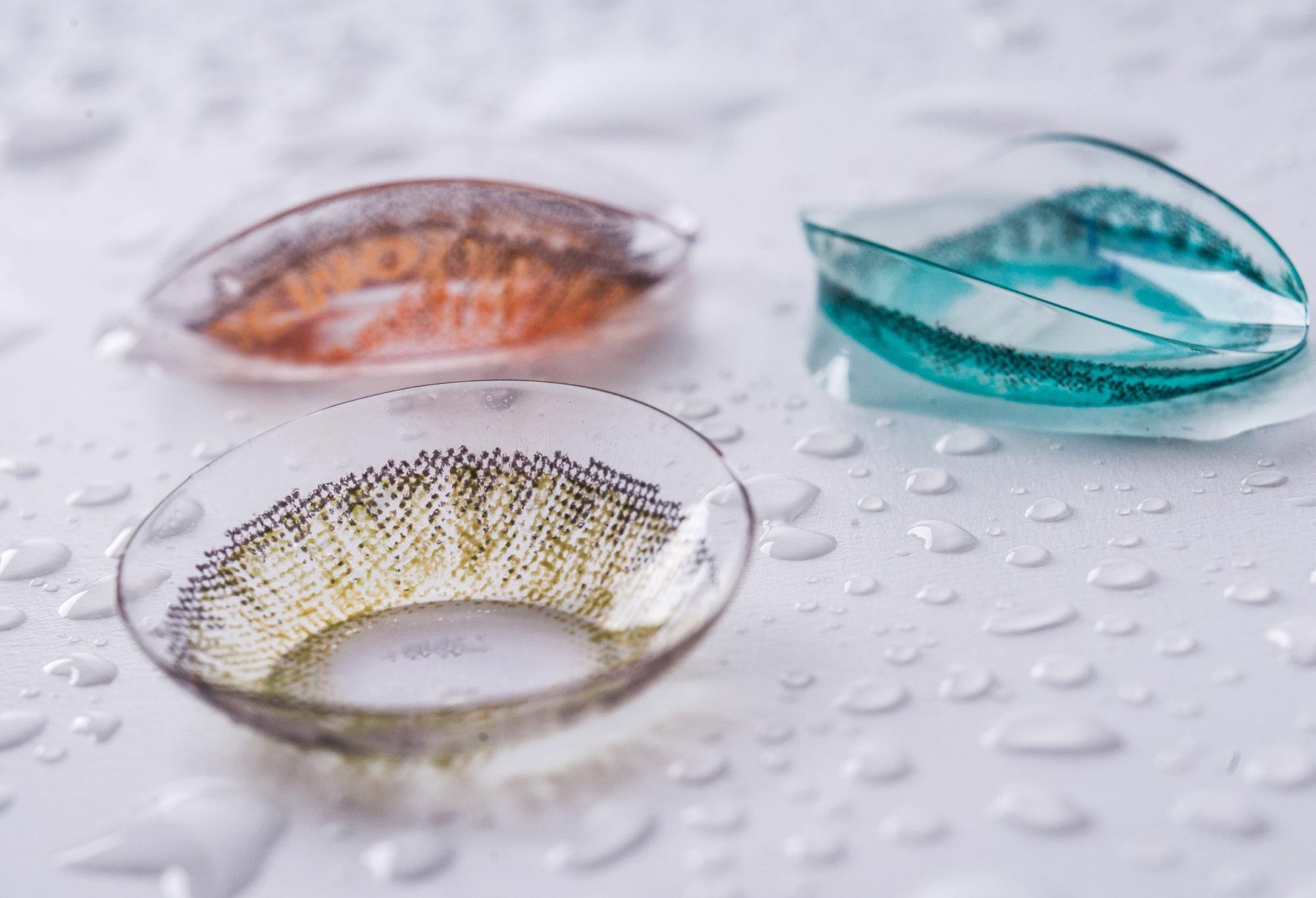Novel research published in the journal Colloids and Surfaces A: Physicochemical and Engineering Aspects has provided an alternative to laser protection glasses through the incorporation of gold nanoparticles within contact lenses.

Study: Gold nanoparticles-loaded contact lenses for laser protection and meibomian gland dysfunction (MGD) dry eye treatment. Image Credit: Audrius Merfeldas/Shutterstock.com
Why is this Development Necessary?
With laser-based devices being used widely within several industries such as medicine, laboratories, and entertainment, there has been an increase in the number of accidental eye injuries.
The extent of these eye injuries as a result of laser exposure is dependent on the wavelength, power, and exposure duration. Ultraviolet (UV) radiation which consists of 180 – 400 nm wavelengths, does not reach the retina due to being absorbed in the cornea and eye lens. Subsequently, this reduces the damage to the retina and instead can cause corneal or lens injury.
Additionally, further infrared wavelengths such as those pertaining to 1400 nm – 1 mm, are absorbed by the water within the cornea, resulting in a corneal burn.
Visible light, consisting of 400 – 700 nm and near-infrared including 760 – 1400 nm wavelengths, can also be damaging and are transmitted through the cornea and lens, resulting in potential radiation overdose on the retina – the most vulnerable part of the eye.
While the need to protect against these damages has led to the development of several laser-attenuating devices, glasses, and goggles, the use of this preventative equipment can be inconvenient or inaccessible for round-the-clock service for various industries.
Research into laser-protective soft contact lenses incorporated with nanomaterials may provide an everyday alternative.
The Development of Laser-protective Contact Lenses
Laser-protective glasses and goggles work by using heavy metal ions or colloidal particles incorporated into the glass filters or adding dyes into polymeric materials during polymerization.
Researchers have undertaken innovative research in this field to develop laser-protective soft contact lenses encompassing nanomaterials.
While there have been previous studies of graphene-coated contact lenses for electromagnetic interference shielding, poly hydroxyethyl methacrylate soft contact lenses loaded with Au-based silica-shell nanocapsules for the attenuation of wide wavelength range, including gold nanoparticles for this application novel.
The use of gold nanoparticles is optimal, as they are less than 100 nm, have unique optical and surface properties, and most importantly, do not result in ocular toxicity – making them ideal for incorporation within contact lenses.
The researchers utilized gold nanoparticles that exhibit a local maximum absorbance as a tunable wavelength of approximately 520 nm for 12 nm particles due to the localized surface plasmon resonance (LSPR) effect. This enables the protection of eyes against accidental damage from a green laser.
The gold nanoparticles used were incorporated in a poly vinyl alcohol (PVA) contact lens due to its beneficial characteristics such as the stabilization of the particles during manufacturing by the Turkevich method and high compatibility water content.
The desired concentration was achieved through anti-solvent precipitation and redispersion. Particles were then crosslinked through freezing-thawing cycling to finally produce the result – PVA contact lenses loaded with gold nanoparticles (PVA GoldinLens).
The researchers also pursued another route that utilized commercial lenses and the incorporation of gold nanoparticles.
Novel Applications
The incorporation of gold nanoparticles within contact lenses may revolutionize the protective gear required in several industries to prevent accidental eye damage revolving around laser exposure. However, an additional application has also been explored on using these novel lenses for treating dry eyes.
Dry eye is a ubiquitous ophthalmic disease with 25% ophthalmic patients suffering from these symptoms. This disorder can occur due to an unstable tear film, which causes higher evaporation and lower tear volumes, resulting in, dryness, tearing, and ocular fatigue. Meibomian Gland Dysfunction (MGD) is one of the leading causes of dry eyes, resulting in 86% of diagnosed dry eye cases.
Patients with MGD who experience dry eyes have small glands in the eyelid which are dysfunctional and are unable to secrete oil, resulting in the loss of the lipid layer on the surface of tears. Subsequently, this causes increased tear evaporation.
Treatments for this disorder include anti-inflammatory or antibody eye drops, ophthalmic surgery as well as warm compression treatment. Warming the glands at higher temperatures enables an increase in lipid secretion.
This restores the coating on the tear film and reduces evaporation rates, thus increasing tear volume and minimizing dry eye symptoms.
With supported literature, researchers believe the potential of their novel translatory product, GoldinLens, can be utilized as a MGD dry eye treatment as when heated by laser exposure, can provide warmth to the glands and start the cascading process to alleviate dry eye symptoms.
From providing an alternative to laser-protective instruments to prevent accidental eye damage to potentially advancing medicine through advanced optics, the use of gold nanoparticle-loaded contact lenses may be revolutionary for the advancement of industries and medicine.
Continue reading: Plastic Gold - The Light 18-Karat Nanocomposite and its Applications.
Reference
Liu, Z. and Chauhan, A., (2021) Gold nanoparticles-loaded contact lenses for laser protection and meibomian gland dysfunction (MGD) dry eye treatment. Colloids and Surfaces A: Physicochemical and Engineering Aspects, p.128053. Available at: https://www.sciencedirect.com/science/article/pii/S0927775721019221
Disclaimer: The views expressed here are those of the author expressed in their private capacity and do not necessarily represent the views of AZoM.com Limited T/A AZoNetwork the owner and operator of this website. This disclaimer forms part of the Terms and conditions of use of this website.